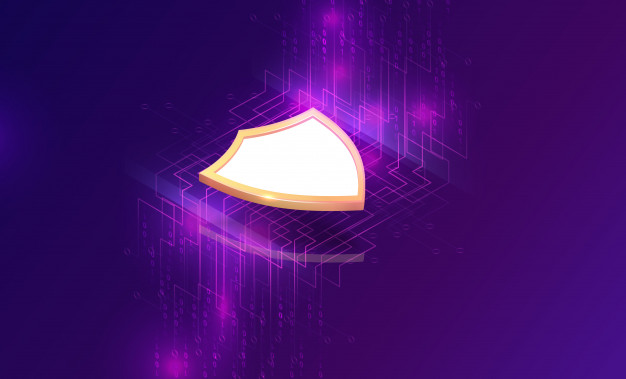How can network support viably empower data based error isolation?
The capacity to recognize, disconnect, and tackle complex issues is getting more significant than ever as networks advance to grasp virtualization. Here’s the way by which our data-driven methodology can have any kind of effect and guarantee the best networking experience.
How would you best manage network complexity? This is the question that service providers oftentimes pose in their journey to streamline the operation of their virtual networks. As a feature of practicing operating models for more prominent proficiency and improved network experience, one of the regions of focus that has been found is issue ID and flaw isolation, as traditional product-level support is essentially not, at this point adequate.
Incidental impacts of disturbance can show up in various layers all through a network and are often influenced by the interoperability of contiguous products, requiring a vendor-independent methodology. Viable failure isolation at the network level depends on the interconnectedness between timely information capture and access to skills to address the root cause (s) of the issue.
Why separate network support from data failures?
Service providers intend to execute new strategies to address isolated network failures by improving their capacity to manage complex virtualized networks and explore 5G environments effectively. Isolating a network issue can be a tedious and complex process, and powerful data analysis often requires in-depth knowledge to test the source of the failure. Meanwhile, making an online experience is getting progressively unsafe.
Ericsson’s online support facilitates the pressure of service provider operational teams failing since we work closely together utilizing data technology and our broad worldwide learning. Beginning with the identification of S-KPI degradation, an intermittent site issue, or an expanded number of calls can include analyzing a huge amount of data to isolate the root cause of the issue. What’s more, the correlation of a disturbance or aggravation doesn’t always cause the reason obviously.
Empowering educated choices progressively is basic. To empower those on the front to settle on fast and precise decisions about the root cause of an issue, we take advantage of remote analysis and guided problem-solving. This allows operations and field specialists to isolate faults quicker and with more prominent precision during a single visit – or even before heading off to a site.
Why is it so hard to accomplish ease of use of five, four, or even three of nine?
Errors: Human errors still cause about 60% of downtime
SPOF: One failure point that leads toward system downtime
Equipment failures, network issues
Surprising traffic peaks
Third-party or external API confidence
To improve the accessibility of the whole system, you have to take a shot at every one of the above points – all things considered, “The quality of a chain is as good as the quality of its most vulnerable link.”
Smart Network Upgrades
With small notice, COVID-19 drove huge numbers of workers away from their workplaces and start from home, where they anticipated that speedy and dependable access should organization services. IT authorities are required to outsource. Because the pandemic revealed the lack of network infrastructure, planning and management needs.
The unexpected influx of employees from known, planned, and unified locations to random corners of the globe have uncovered a reiteration of alternate routes, delayed updates, and momentary decisions we’re making in our individual networks throughout the years – resulting adaptable and versatile network technologies that can improve network availability and agility in a pandemic, for example, SD-WAN, SASE (Secure Access Service Edge) and on-line networking (IBN) were not available to many companies.
Organizations have accomplished the enormous achievement of empowering teams of workers, over different divisions, to stay productive. Today, notwithstanding, the same teams face another challenge: dealing with the potential new security and protection risks presented by the race to interface employees remotely.
The coming months will be critical as organizations try to mitigate these risks without destroying the external job openings that representatives are currently acquainted with.
The time has come to take a look at how it provides secure internet to telecommuters
Truth be told, overnight, the remote population of workers moved from 10% to 100% of the workforce in many companies. This has hugely affected the network architecture incorporated with the traditional hub and the social model that requires a unified delivery of security. Both incoming and outgoing traffic is dealt with by a VPN in the data center, where a security strategy is applied, which basically broadens the control of the data center and visibility to telecommuters.
The issue is that the hub and radio model isn’t ideal for the huge amount of traffic or the sort of traffic that is presently moving through the network. Resulting in reset VPN connections. Clients report on capacity and bandwidth issues. They can’t sign in or connect. Performance is moderate, while latency makes obstacles in regular business processes.
Remote users don’t access to the tools and data they have to proceed with their business, which influences business progression. Also, VPN infrastructure is extremely unpredictable and tedious and to do this for 100% of the workforce takes months if not years.
Companies have been trying to fix overwhelmed VPNs with split tunnels. The split tunnels separate the movement into two cubes. Local applications keep on moving through VPNs, where IT teams have visibility and control to monitor, manage, and protect information. Then again, Internet traffic (Internet browsing, Internet-based email, SaaS platforms, and web applications) is sent directly to the Internet, without a VPN. This configuration can lessen VPN traffic by more than 70 percent, giving secure access to remote users without over-burdening the infrastructure.
Simultaneously, users will be able to appreciate the Internet freely without any potential repercussions, with PC and data activity moving beyond the traditional perimeter of security and essentially growing attack surfaces. Users have no protection against progressively modern cybersecurity threats, for example, managing and zero-day attacks, downloading malware, ransomware, and phishing.
Just a single user needs to tap on one malicious link to bargain with the company’s business systems and information. Multiply it by the whole workforce that works remotely beyond the consideration of the Firewall and security team and altogether expands the risk.
The best way to protect Internet traffic that a VPN prevents is to provide security services over the cloud. Cloud security guarantees that the approach monitors the users from whom they enter. The worldwide proxy in the cloud acts as the main issue of security control for all traffic, providing an overall and separate layer of security in the cloud through which all web traffic passes. A security policy can be enacted here to guarantee that the policy is executed whether or not the user is standing outside the Firewall or entering from home.
The Global Cloud Proxy system allows you to split tunnels without bargaining security. In this model, traffic to the data center is controlled and secured by a VPN. While traffic to the Internet is ensured by a worldwide proxy system in the cloud. This guarantees full execution of security policies across traffic (counting HTTPS) while lessening VPN speeds by up to 70 percent, allowing companies to evaluate their work-from-home capacities in emergencies.
The future of work is here, yet traditional VPNs fail to meet the security needs of the current remote workforce. A split tunnel can lighten operational issues, however web traffic will be totally vulnerable against cybersecurity threats. The development of cloud security services tackles this issue by allowing companies to divert Internet traffic to the cloud in the global security layer, while as yet depending on VPN protection for database entry and exit traffic.
Why traditional network security is no longer ensured
The only constant in life change. This way of thinking applies to corporate network security is always advancing, often set off by events, for example, the 2017 NotPetya ransomware attack that crashed a large number of PCs around the globe with a single password. These events lead to changes in the network architectures and the ways of thinking on which they are based.
The Internet was at first unsafe, as there were noteworthy issues that must be solved at the time of its creation. For quite a long time, the network security theory has focused on protecting the interior from external threats. This was a similar way of thinking on which the Romans relied to protect their borders.
The meaning of perimeters seemed well and good at the beginning of network security and focused on the essential guideline of top-to-bottom defense – protection of internal resources from external forces. It worked because the representatives were connected to the workplace and the walls of the workplace decided the extent to which it protected the resources to which they access.
If you go out, workers will become intruders trying to access the same resources. While the traditional security perimeter was weak, it usually worked in spite of the take-off chuck points for medium-sized software devices that depended heavily on static security policies.
In any case, security best practices and the devices that go into the devices are ultimately not supported or get obsolete as next-generation practices and technologies replace them – until a critical crisis strikes. At that point, the driver for change was a non-digital virus: COVID-19.



































